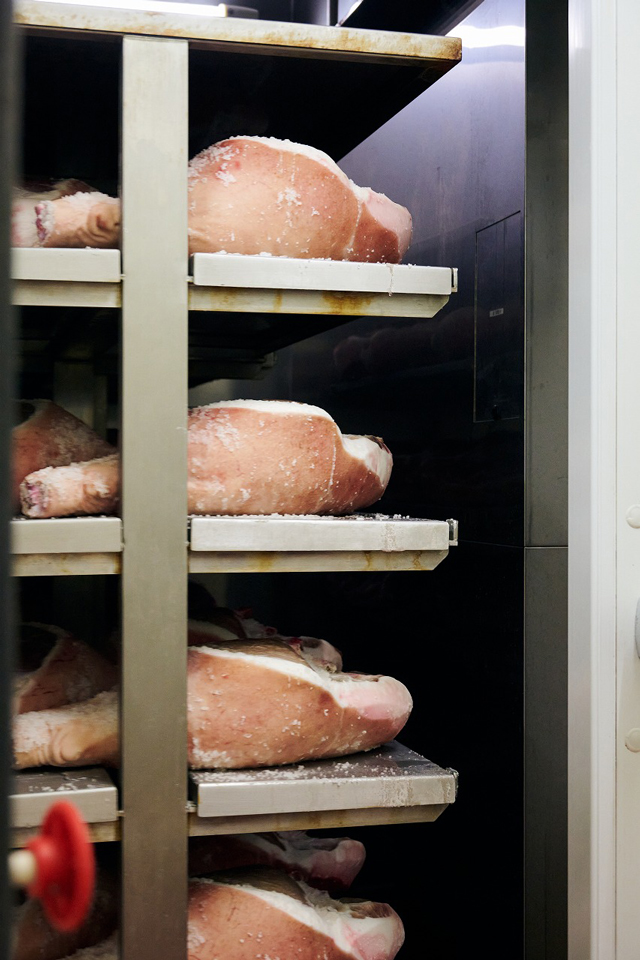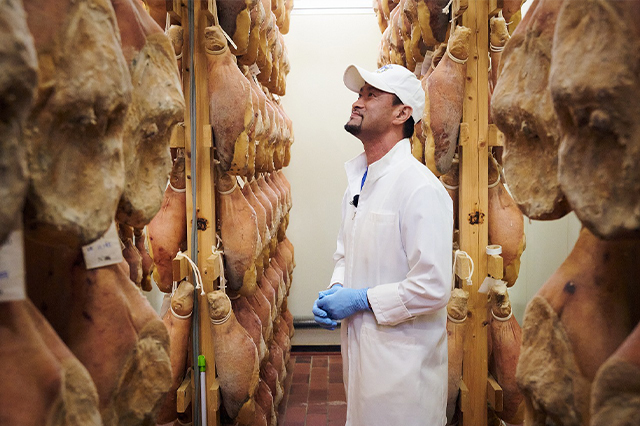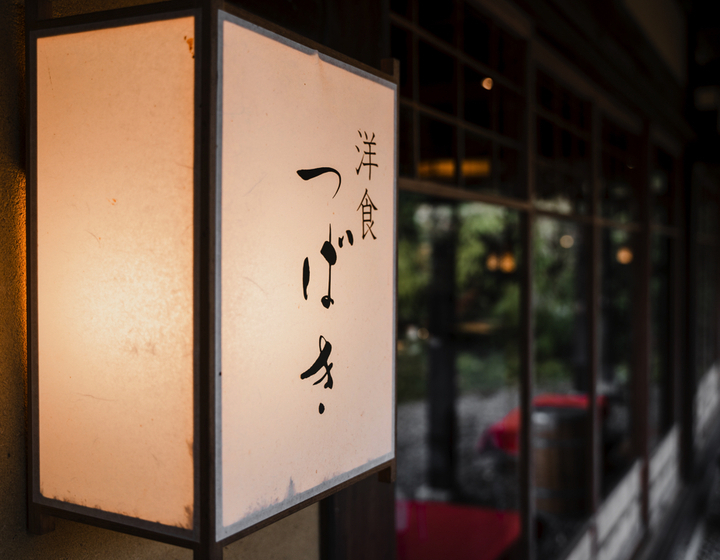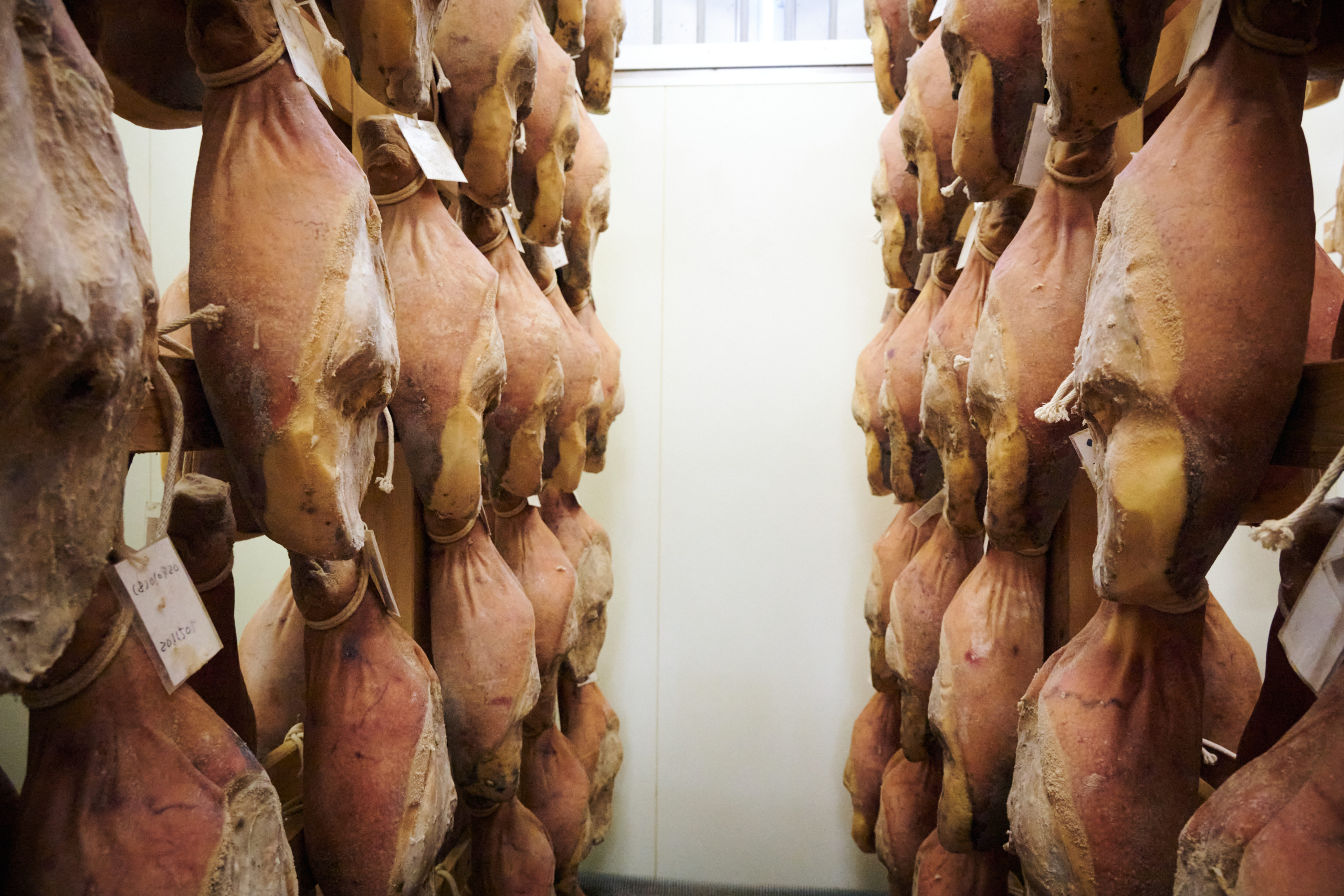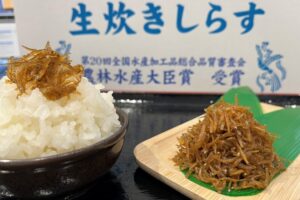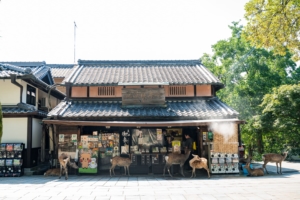“Parma Ham”, one of the world’s three most famous hams
Prosciutto di Parma. Parma ham, also known as Parma ham, is one of the world’s three most famous hams, along with China’s Kinhua ham and Spain’s Jamon Serrano. It is produced in Langhirano, Parma, Emilia-Romagna, northeastern Italy. Most of the Parma hams distributed around the world are produced in about 200 factories located in a village with a population of about 10,000, about 10 km away from the center of Parma, known as the gourmet capital of the world. And it has been there for more than 2,000 years. But how did this small town come to produce the world’s leading ham?
It is the “wind. Parma ham is made without any additives such as nitrous acid, and the only processes are salting and dry aging. The taste of the meat varies considerably depending on the quality of the wind, but the Parma wind that blows in from the clear streams flowing in the beautiful mountains and the indigenous bacteria that exist in Parma make the ham delicious,” says Masayo Tada, the first Japanese to be recognized as a Parma ham craftsman. When he was a university student, he could not forget the taste of Parma ham he had tasted by chance, and at the age of 30, he decided to become a ham craftsman and went to Italy by himself. He went to Italy on his own and knocked on the door of a ham factory in Langhirano, but since he could not speak Italian and had no idea what to expect, he was naturally turned down at the doorstep.
At the time, Mr. Hide was active in Rome, and I saw him as my rival (laughs). After eight months of visiting ham factories, he was finally able to overcome his passion and became an employee of a genuine ham factory, where he worked as a Parma ham craftsman for about 10 years.
When he was finally able to work as a full-fledged craftsman, American capital came in and the wave of mass production arrived in Parma. Productivity came to take precedence over craftsmanship. Mr. Tada decided to return to Japan because he could no longer produce the Parma ham that impressed him so much. After considering various possibilities, he decided to try his hand at making Parma ham in Japan. He spent about three years traveling around Japan in search of a place with a climate and environment similar to that of Parma. Finally, they arrived at Seki-City in Gifu Prefecture, where there were beautiful mountains, clean rivers, and winds similar to those of Parma.
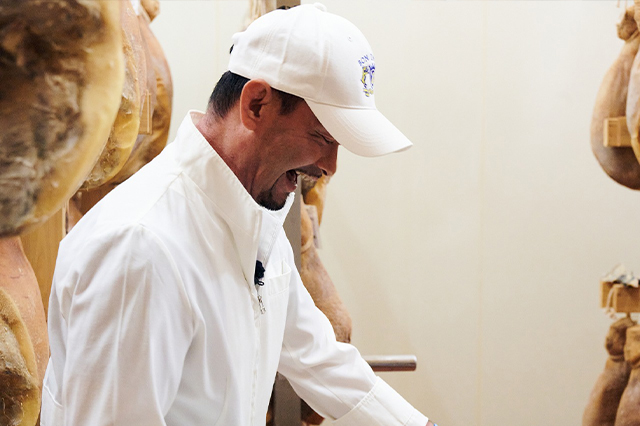
We want to spread “Parma Ham” in Japan.
However, making Parma ham, which has no precedent in Japan, was extremely difficult. In order to be recognized as Parma ham, the ham must be made from pigs that have been fattened for nine months and weigh more than 150 kg. In Japanese pigs, this would mean pigs over 120 kg raised for more than 6 months. Parma ham requires a large pig to produce a delicious ham, so the size of the pig is regulated by law. It is also an absolute requirement that the pork be salted and prepared within 48 hours with the skin still on. In Japan, it is common to remove the skin at the time of slaughter, so it was difficult to purchase and prepare pigs with the skin still on.
After some twists and turns, they were able to obtain pigs, but this time they could not produce the yeast necessary for aging. He thought about bringing yeast from Italy, but he believed his colleagues when they told him, “If you can make it from scratch, you should definitely do it yourself,” and continued to make prototypes. After working in the factory for a long time, miraculously, the moment came when I was able to make it. From there, little by little, I began to be able to express the ham I imagined. I realized that five years had passed since I started ham production in Japan.
It may be cheeky of me to challenge Parma Ham, which has a history of more than 2,000 years, with only about 10 years of experience, but I would like to see Parma Ham regain the good old days and establish a “Japanese ham” to speak to Parma. He says that he would like to establish “Japanese ham” and talk to Parma.
The ham made by a man who was once laughed at as having nothing but passion in Italy brings smiles to people’s faces and speaks more eloquently than words.
